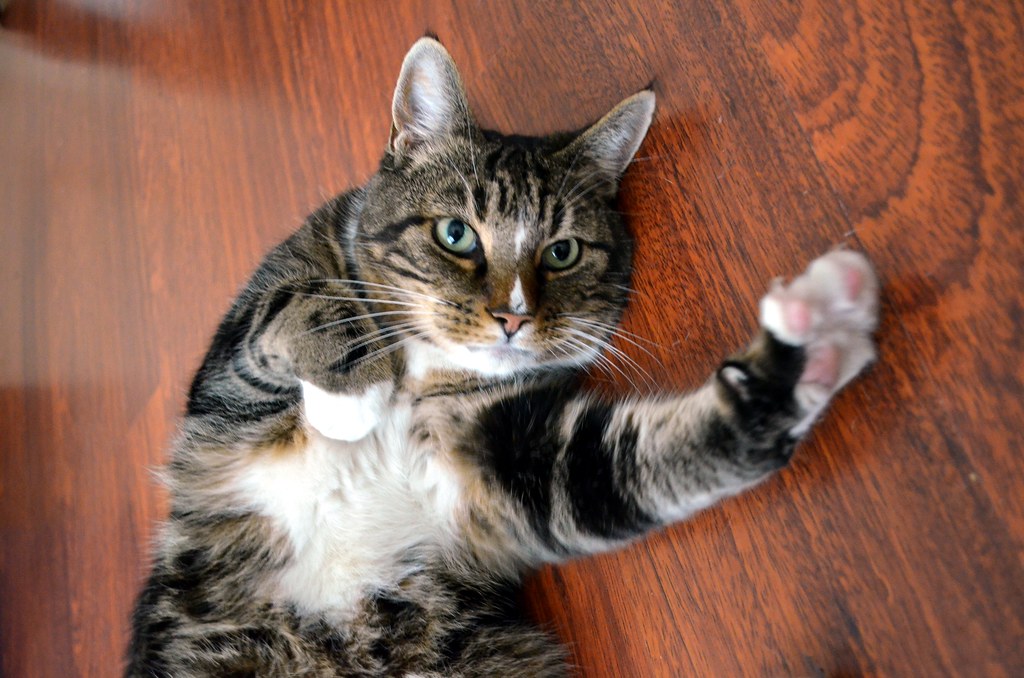Do you sometimes feel like your cat is a mystery waiting to be unraveled? You’re not alone. Cats are fascinating creatures, full of quirks and unique personalities. Whether you’re a new cat owner or a seasoned feline aficionado, understanding how to properly socialize and handle your furry friend can make a world of difference in your relationship.
One thing’s for sure: cats are not dogs. They don’t always come when called, and their social cues can be more subtle. But getting to know your cat can bring immense joy and a deeper bond.
Here are just a few benefits of socializing and handling your cat properly:
- A happier, more confident pet
- Reduced behavioral issues
- Enhanced trust and connection between you and your cat
“A well-socialized cat is a joy to have around; they are more relaxed, friendly, and ready to engage with their human family.” – Animal Behaviorist
Embark on this journey with us as we delve into the rewarding world of cat socialization and handling, offering you practical tips and insights every step of the way.
What are common behaviors of cats during socialization?
Cats often exhibit a range of vocalizations during socialization. These can include purring, which usually indicates contentment, and meowing, which can be a way to seek attention or communicate needs. Hissing or growling, on the other hand, may indicate fear or aggression. Body language is a crucial aspect of cat behavior during socialization. A cat with an arched back and puffed-up fur is likely feeling threatened, while a cat that exposes its belly is showing trust and relaxation. Tail position is also telling; a high, upright tail often signals a happy and confident cat, whereas a tucked tail may indicate fear or submission.
Cats use scent marking as a way to communicate and establish territory. They may rub their face or body against furniture, people, or other animals to leave their scent. This behavior is generally a sign of comfort and acceptance in their environment. Play behavior is another common aspect of cat socialization. Cats often engage in play that mimics hunting, such as stalking, pouncing, and batting at objects. This type of play is not only a form of exercise but also a way for cats to bond with their human companions and other animals.
Grooming is a social behavior that cats often engage in with those they trust. Cats may groom each other or their human companions as a way to show affection and reinforce social bonds. Mutual grooming, or allogrooming, is particularly common among cats that have a close relationship. Cats may also exhibit avoidance behaviors during socialization, especially if they are feeling overwhelmed or stressed. This can include hiding, turning away, or retreating to a safe space. It’s important to respect these signals and give the cat time to feel comfortable.
How can pet owners create a safe environment for socializing cats?
Creating a safe environment for socializing cats begins with providing a secure and comfortable space. Ensure that the area is free from potential hazards such as sharp objects, toxic plants, or small items that could be swallowed. This space should also be quiet and free from excessive noise or sudden disturbances, which can stress cats and hinder their socialization process. Introduce your cat to new environments gradually. Start by allowing them to explore one room at a time, and slowly expand their access to other parts of the house. This helps prevent them from feeling overwhelmed and allows them to build confidence in a controlled manner.
Provide plenty of hiding spots and elevated areas. Cats feel safer when they have the option to retreat to a secure place if they feel threatened or anxious. This could include cat trees, shelves, or even simple cardboard boxes. These spots give them a sense of control over their environment. Use positive reinforcement to encourage social behavior. Reward your cat with treats, praise, or gentle petting when they exhibit calm and friendly behavior. This helps them associate social interactions with positive outcomes, making them more likely to engage in the future.
Introduce new people and pets slowly and carefully. Allow your cat to approach new individuals at their own pace, and monitor their body language for signs of stress or discomfort. Gradual introductions help prevent negative experiences that could hinder their social development. Maintain a consistent routine. Cats thrive on predictability, and a stable routine can help reduce anxiety. Regular feeding times, play sessions, and quiet periods can create a sense of security, making it easier for your cat to adapt to social interactions.
Ensure that your cat has access to essential resources like food, water, litter boxes, and scratching posts. Competition for these resources can lead to stress and aggression, so providing multiple options can help prevent conflicts and promote a peaceful environment. Maintain a consistent routine. Cats thrive on predictability, and a stable routine can help reduce anxiety. Regular feeding times, play sessions, and quiet periods can create a sense of security, making it easier for your cat to adapt to social interactions.
What are effective techniques for handling cats?
One effective technique for handling cats is to always approach them calmly and quietly. Sudden movements or loud noises can startle cats and make them wary of you. Instead, move slowly and speak in a soft, soothing voice to help them feel more at ease. When picking up a cat, it’s important to support their body properly. Place one hand under their chest and the other under their hindquarters. This ensures that their weight is evenly distributed and they feel secure. Avoid grabbing them by the scruff of the neck, as this can be uncomfortable and stressful for adult cats.
Respecting a cat’s personal space is crucial. Cats are naturally independent animals and may not always want to be handled. Pay attention to their body language; if they seem tense, flick their tail, or flatten their ears, it’s best to give them some space and try again later. Using positive reinforcement can help make handling a more pleasant experience for your cat. Offer treats, praise, or gentle petting when they allow you to handle them. This creates a positive association with being handled and can make them more cooperative over time.
Regularly handling your cat in a gentle manner can help them become more accustomed to it. Start with short sessions and gradually increase the duration as they become more comfortable. This can be particularly helpful for grooming, vet visits, and other necessary interactions. Introducing handling gradually is especially important for kittens. Begin by gently touching and holding them for short periods, and gradually increase the time as they get used to it. Early positive experiences with handling can lead to a more sociable and well-adjusted adult cat.
Using appropriate tools can also make handling easier. For example, a cat carrier can provide a safe and secure way to transport your cat. Make sure the carrier is comfortable and introduce it to your cat gradually, allowing them to explore it on their own terms before using it for travel.
How can pet owners recognize signs of stress in their cats?
Cats are often subtle in showing their stress, so pet owners need to be observant of various behavioral and physical signs. One common indicator is a change in appetite. A stressed cat might eat significantly less or more than usual. Additionally, some cats may develop gastrointestinal issues, such as vomiting or diarrhea, when stressed. Changes in grooming habits can also signal stress. Over-grooming, which can lead to bald spots or skin irritations, is a common response to anxiety. Conversely, a stressed cat might neglect grooming altogether, resulting in a matted or unkempt coat. Both extremes are red flags that your cat may be experiencing stress.
Alterations in litter box behavior are another key sign. A cat that suddenly starts urinating or defecating outside the litter box may be trying to communicate distress. This behavior can be particularly concerning if the cat was previously consistent in using the litter box. Social behavior changes are also indicative of stress. A normally sociable cat might become withdrawn, hiding more often or avoiding interaction with humans and other pets. On the other hand, a typically independent cat might become unusually clingy or demanding of attention.
Vocalization patterns can change when a cat is stressed. Increased meowing, growling, or hissing can all be signs that your cat is feeling anxious or threatened. Pay attention to the context in which these vocalizations occur to better understand what might be causing the stress. Body language is another important indicator. A stressed cat may exhibit a hunched posture, flattened ears, dilated pupils, or a twitching tail. These physical cues can help pet owners identify when their cat is feeling uncomfortable or threatened.
Finally, changes in sleep patterns can also be a sign of stress. A stressed cat might sleep more than usual as a way to escape from stressors, or they might sleep less and appear restless. Monitoring your cat’s sleep habits can provide additional insights into their emotional well-being.
What are the benefits of socializing cats early?
Socializing cats early helps them become more comfortable and confident in various environments and situations. This can reduce stress and anxiety, making them more adaptable to changes such as moving to a new home or encountering new people and animals. Early socialization can significantly reduce the likelihood of behavioral problems. Cats that are well-socialized are less likely to exhibit aggression, fearfulness, or destructive behaviors, leading to a more harmonious household. Socialized cats are generally more affectionate and trusting towards humans. They are more likely to enjoy being petted and handled, which strengthens the bond between the cat and its owner, enhancing the overall pet ownership experience.
Introducing cats to different stimuli early on, such as various sounds, sights, and smells, can make them less reactive and more resilient. This can be particularly beneficial during events like vet visits or grooming sessions, where unfamiliar experiences are common. Early socialization can improve a cat’s ability to interact positively with other pets. This is especially important in multi-pet households, as it can prevent territorial disputes and promote peaceful coexistence among animals.
Socializing cats at a young age can make them more playful and curious. Engaging with toys, games, and interactive activities can provide mental stimulation, which is essential for their overall well-being and can prevent boredom-related issues.
- Early socialization helps kittens grow up to be friendly and confident adult cats.
- Positive interactions with humans can foster trust and reduce fear in cats.
- Introducing kittens to a variety of environments can help them adapt better to changes.
- Interactive play enhances a cat’s mental and physical health.
- Socialized cats are better at forming bonds with both humans and other animals.
- A well-socialized cat is less likely to develop behavioral issues such as aggression or anxiety.
Understanding the importance of socializing and handling cats from an early age is vital for their overall well-being. Through quality time, positive interactions, and exposure to diverse environments, you’ll help foster a feline friend who is not only loving and adaptable but also mentally and physically healthy. Remember, patience and consistency are key. By investing in your cat’s social development, you’re paving the way for a harmonious and fulfilling relationship.



